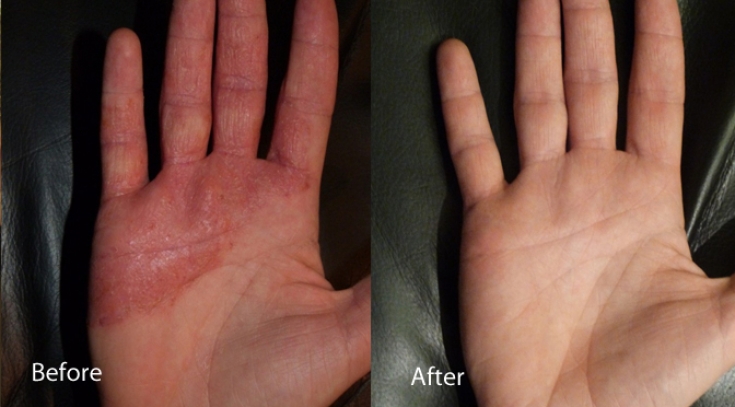Atopic dermatitis – a genetically determined disease that manifests itself as an inflammatory lesion of the skin in response to exposure to an allergen. Even minimal changes can cause serious physical and psychological discomfort.
Treatment of atopic dermatitis – a complex and lengthy process that involves the use of emollients, antihistamines, and topical steroids. First-line treatment is not always effective. When atopic dermatitis acquires a chronic course and often recurs - all known methods are used. Light therapy or phototherapy can significantly improve the quality of life of the patient, and also has a positive effect on the further prognosis of the course of the disease. The main advantages of phototherapy – it is painless procedures and guaranteed achievement of the desired effect. On estet-portal.com read about how phototherapy helps in the treatment of atopic dermatitis.
Mechanism of the effect of phototherapy on the skin
Light therapy entered medical practice as early as the 1890s. Half a century later, the first data appeared on the widespread use of phototherapy in combination with agents that enhance its effect. It was then that it was noticed that patients with atopic dermatitis had persistent remissions in the summer. How does light therapy have such a healing effect?
Light affects the skin in three ways. First – this is an irritating effect on the receptors of the nervous system, which results in an increase in the synthesis of neuropeptides and neurotrophins, which improve skin nutrition. The second path – activation of the protective function of the skin. And the third – anti-inflammatory effect achieved by apoptosis of immunological response cells.
Light Therapy:
- main types of phototherapy for atopic dermatitis;
- possible negative effects of phototherapy;
- Effectiveness of light therapy in the treatment of atopic dermatitis.
The main types of phototherapy for atopic dermatitis
Phototherapy is based on the use of infrared and ultraviolet light. There are different treatment modes:
- planned with breaks in therapy – used for recurrent forms of atopic dermatitis, reduces the risk of recurrence;
- permanent support – used in patients with refractory and chronic dermatitis.
Light therapy is prescribed only by a doctor who takes into account the oncological history of the patient, his age and the severity of the course of atopic dermatitis. The intensity of exposure during phototherapy corresponds to the minimum dose of erythema.
Effective light therapy helps to reduce rashes by 90%.
Specific types of radiation used for atopic dermatitis are:
- UV B radiation has a medium wavelength. Radiation of this type of a wide spectrum is used for extensive areas of damage, and a narrow – in the treatment of local resistant lesions in atopic dermatitis.
- Photochemical therapy involves the use of photosensitizing substances in combination with irradiation – psoralens, which increase the intensity of phototherapy.
- Laser Therapy – acts more locally on the lesion with fewer side effects.
Among the different types of radiation, it is impossible to choose the most effective one, since each patient has an individual sensitivity to different light exposures. Narrow-spectrum phototherapy is the safest, and therefore it is allowed to be used in the treatment of pregnant women and children over 5 years old.

Possible negative effects of light therapy
The main problem with the use of phototherapy is the appearance of photosensitivity reactions on sensitive skin, such as:
- local erythema;
- itching and burning;
- rashes;
- herpes reactivation;
- facial hypertrichosis.
Also, the wrong dose of light therapy can lead to dry skin and early wrinkling. In this regard, light treatment is important to supplement & nbsp; skin moisturizers for a longer and more effective result.
The most serious consequences of phototherapy – This is a malignant neoplasm of the skin. Therefore, consultation with a specialist before starting phototherapy is an integral stage of treatment.
Effectiveness of phototherapy in the treatment of atopic dermatitis
Light therapy affects the course of atopic dermatitis at the cellular level. First, irradiation is absorbed by nucleic acids and their antigen presentation changes, which helps to reduce the activity of immunological damaging agents. And, secondly, phototherapy stimulates the reproduction of keratocytes.
The skin after phototherapy in atopic dermatitis is less damaged and recovers faster.
After weighing all the pros and cons of phototherapy, we can say with confidence that this method should not be underestimated. Light treatment can be a lifesaver for those patients who are already desperate. Proper selection of dosage and careful examination minimize the risk of side effects. Acting deep in the skin, phototherapy changes the structure of the cell for the better, and along with it – and the life of the patient.







Add a comment